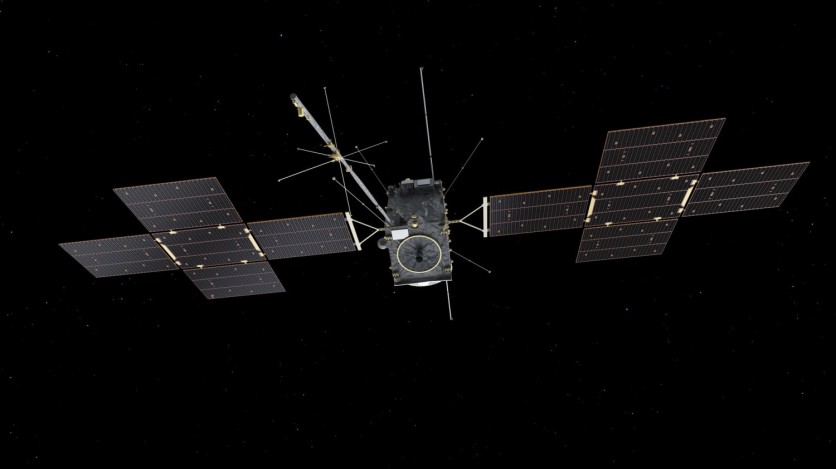Embarking on an awe-inspiring journey, the European Space Agency's (ESA) JUICE mission is on its way to the captivating gas giant, Jupiter, aiming to unlock the secrets hidden within its enigmatic icy moons.
With six weeks behind it, the Flight Control Team has accomplished a remarkable feat, successfully deploying a range of vital components that were securely tucked away during launch.
The culmination of this meticulous process involved the precise positioning and locking of the probes and antennas comprising Juice's Radio & Plasma Wave Investigation (RPWI).

Exciting Six Weeks
Reflecting on the journey thus far, Angela Dietz, the deputy spacecraft operations manager for the mission, said, "It's been an exhausting but very exciting six weeks. We have faced and overcome various challenges to get Juice into the right shape for getting the best science out of its trip to Jupiter."
Throughout the deployment process, Juice has treated us to captivating snapshots, courtesy of its two onboard monitoring cameras, each offering a unique perspective.
From capturing its inaugural "selfies" in the vast expanse of space shortly after launch to inspecting the correct deployment of all spacecraft components, these cameras have proven indispensable.
The strategic positioning of Juice's antennas and booms plays a crucial role in facilitating the functionality of its ten instruments. By distancing them from the spacecraft, the instruments requiring separation from its electric and magnetic fields remain effectively isolated.
This formidable suite of instruments is poised to collect invaluable data, paving the way for answers to a myriad of tantalizing questions. What secrets lie hidden within Jupiter's ocean worlds? What sets Ganymede apart with its distinctiveness? Could the Jupiter system have once fostered or still harbor life?
How has the intricate interplay between Jupiter's environment and its moons shaped their identities? Through unraveling the mysteries of gas giant planets, scientists hope to gain profound insights into their origins and intricate workings.
Read Also : ESA Seeks Help From AI to Discover Exoplanets; Here's What to Know About Ariel Data Challenge 2023
Ready for Jupiter's Embrace
While the monitoring cameras have granted glimpses into the deployment process, the instruments themselves have offered their own validation of successful deployment, according to ESA .
Teams overseeing various instruments have powered them on, conducting meticulous measurements to ensure optimal performance. Already, the RPWI, JANUS, J-MAG, GALA instruments, and the RADEM radiation monitor have been declared ready for Jupiter's captivating embrace.
This week also witnessed the triumphant deployment of the four Langmuir Probes and three Radio Wave Instrument antennas, comprising seven of the ten RPWI sensors. These sensors will measure variations in the electric and magnetic fields surrounding Jupiter, as well as monitor radio waves and cold plasma.
August 2024 promises an exhilarating milestone for Juice, as it prepares to execute an unprecedented lunar-Earth gravity assist maneuver. This daring maneuver entails a gravity assist flyby of the Moon, followed a mere 1.5 days later by a gravity assist flyby of Earth.
This strategic move holds the potential to conserve a significant amount of propellant on Juice's extraordinary journey, ensuring its mission remains on course for scientific discoveries.
Related Article : ESA JUICE Mission Aiming to Find Life on Jupiter Moons! Here's What is Known So Far

![Apple Watch Series 10 [GPS 42mm]](https://d.techtimes.com/en/full/453899/apple-watch-series-10-gps-42mm.jpg?w=184&h=103&f=9fb3c2ea2db928c663d1d2eadbcb3e52)



